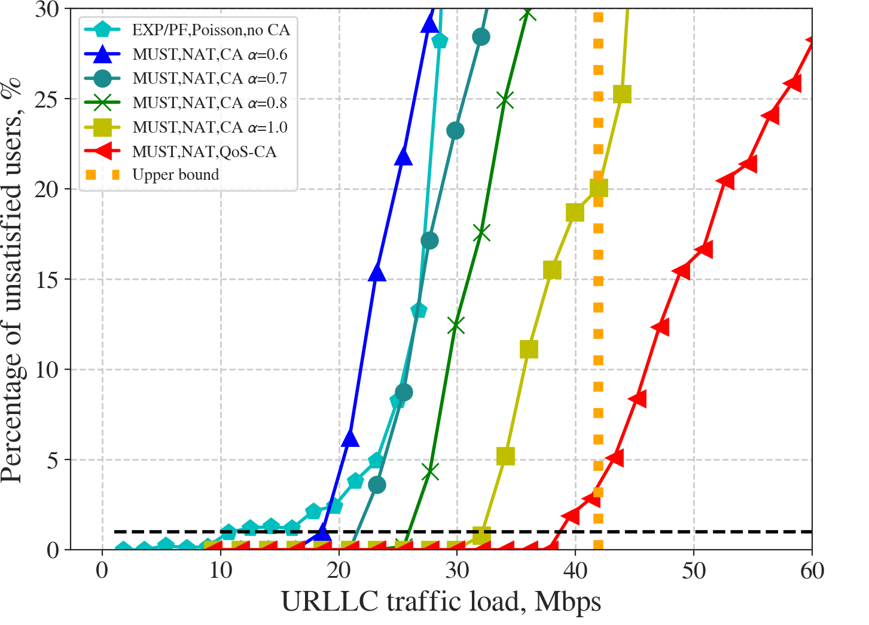Ultra-Reliable Low-Latency Communications (URLLC)
Ultra-Reliable Low-Latency Communications (URLLC) is one of the three main usage scenarios for 5G. It is envisioned as one of the enablers for future vertical applications such as industrial automation, remote robot control, e-health, autonomous driving, and so on. Such applications typically require that a wireless network shall deliver packets within a very short delay budget (less than 1 ms) and at the same time provide ultra-high reliability (higher than 99,999%).
To satisfy such strict requirements, 3GPP has been developing a novel technology called New Radio (NR) that includes a set of PHY and MAC features aimed at reducing delay and improving reliability in comparison with existing cellular technologies (e.g., LTE, LTE-A). While these features are absolutely necessary to enable URLLC at least for one user (UE), the whole network performance consisting of many UEs with URLLC traffic significantly depends on the higher layer features that are not defined in NR specifications.
Wireless Networks Lab has developed a novel cross-layer framework that works in conjunction with NR technology and aims at maximizing the network capacity for URLLC traffic, i.e., maximizing the traffic load at which Quality of Service (QoS) requirements are satisfied for more than 99% of users (UEs). The framework consists of three main components.
- Novel scheduler (called MUST) allocates channel resource to different UEs such that the QoS requirements are satisfied for a maximum number of UEs. It is shown that such a problem is NP-hard and proposed a low-complexity scheduling algorithm that provides a solution very close to the optimal one.
- Traffic management algorithm works at a base station and uses xStream protocol (previously developed by WNL) to establish control connections with UEs. The base station uses the established control connections to synchronize packet generation times at different UEs and to smooth traffic load over the time. As a result, wireless channel resource utilization becomes close to 100%.
- QoS-aware congestion avoidance algorithm aims at avoiding network performance degradation when the load exceeds the network capacity. It stops serving some UEs such that QoS requirements are still satisfied for the maximum possible number of UEs.

WNL team has compared the performance of the proposed framework with the best state-of-the-art solutions. The attached figure shows the percentage of unsatisfied UEs as the function of URLLC traffic load. Capacity is the maximum load when the percentage of unsatisfied UEs exceeds 1%. The results show that with all three components enabled (see curve “MUST, NAT, QoS-CA”) the network capacity can be increased more than three times compared to the state-of-the-art solutions (curve “EXP/PF, Poisson, no CA”). Also, WNL Lab has developed a method to estimate the upper bound of the network capacity. The results demonstrate that the proposed framework provides the capacity of only 7% less than the upper bound. The results of this study are submitted to IEEE Transactions on Mobile Computing journal.
